#Ballet Russe de Monte Carlo
Photo
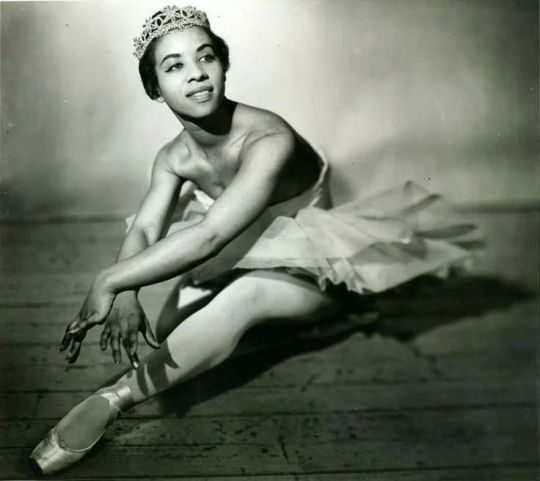
On This Day in New York City History February 2, 1935: Dancer Anne Raven Wilkinson (February 2, 1935 – December 17, 2018) was born in New York City, New York. Wilkinson has the distinction of being the first African-American woman to dance for a major classical ballet company.
Wilkinson was born into a middle class black family in Harlem. Her father was a medical doctor and her mother a ballet dancer. Her love for ballet was born from watching a performance of the Ballet Russe de Monte Carlo, a dance group that she would make history with.
Wilkinson would face difficulties in getting accepted to the Ballet Russe de Monter Carlo. Twice she was rejected before she was accepted at the age of 20 in 1955 by the director of the Ballet Russe de Monte Carlo, Serge Denham.
After leaving the group in the early 1960, Wilkinson would dance with a number row groups before retiring in 1974. That would be a short lived retirement. In the same year Wilkinson would join the New York City Opera and dance for them until 1985. In her later years she would serve as mentor to Misty Copeland who was a trailblazer in her own right. Copeland was the first African American to become a principal dancer at the American Ballet Theatre.
Wilkinson passed away on December 17, 2018 at the age of 83.
#AnneRavenWilkinson #BalletRusseDeMonteCarlo #AfricanAmericanHistory #AfricanAmericanStudies #BlackHistory #BlackStudies #BlackHistoryMatters #WomensHistory #WomensStudies #HERStory #DanceHistory #NewYorkHistory #NYHistory #NYCHistory #History #Historia #Histoire #Geschichte #HistorySisco
https://www.instagram.com/p/CoKa8wxuhZG/?igshid=NGJjMDIxMWI=
#Anne Raven Wilkinson#Ballet Russe de Monte Carlo#African American History#African American Studies#Black History#Black Studies#Black History Matters#Women's History#Women's Studies#HERstory#Dance History#New York History#NY History#NYC history#History#Historia#Histoire#Geschichte#HistorySisco
48 notes
·
View notes
Text
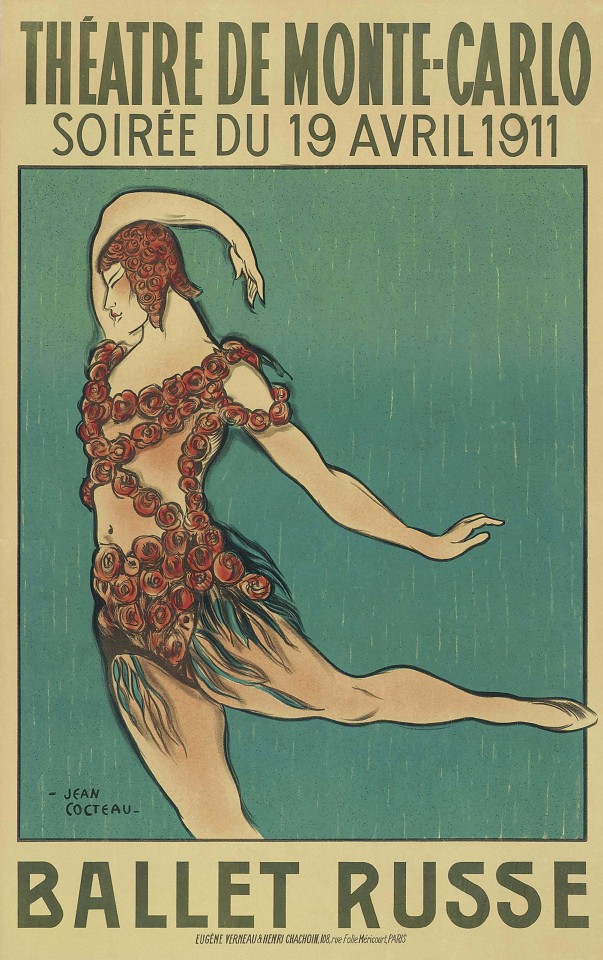
Jean Cocteau (1889-1963) :: Théatre de Monte-Carlo; Ballet Russe; [Nijinsky]. Lithograph in colours, 1911, printed by Eugène Verneau & Henri Chachoin, Paris. | src Christie's
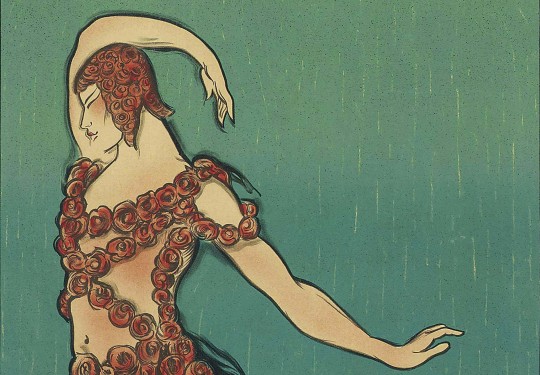
view more on wordPress
#ballets russes#ballet dancer#dance pose#jean cocteau#vaslav nijinsky#Diaghilev Ballets Russes#le spectre de la rose#nijinsky#ballet company#monte carlo#1910s#danza#danse#tansii#dance#dansa#tanzpose#poster design#Tanz
70 notes
·
View notes
Text

Today In History
Alvin Ailey was born on January 5, 1931, in Rogers, Texas. His experiences of life in the rural South would later inspire some of his most memorable works.
Ailey was introduced to dance in Los Angeles by performances of the Ballet Russe de Monte Carlo and the Katherine Dunham Dance Company, and his formal dance training began with an introduction to Lester Horton’s classes by his friend Carmen de Lavallade.
In 1958, he founded Alvin Ailey American Dance Theater to carry out his vision of a company dedicated to enriching the American modern dance heritage and preserving the uniqueness of the African-American cultural experience. He established the Alvin Ailey American Dance Center (now The Ailey School) in 1969 and formed the Alvin Ailey Repertory Ensemble (now Ailey II) in 1974.
Mr. Ailey was a pioneer of programs promoting arts in education, particularly those benefiting underserved African American communities.
CARTER™ Magazine
#carter magazine#historyandhiphop365#carter#wherehistoryandhiphopmeet#history#cartermagazine#today in history#staywoke#blackhistory#blackhistorymonth#alvin ailey
77 notes
·
View notes
Photo

“Grace Kelly was great however I think people overstate her role in Monaco quite a bit. All what makes Monaco famous: the casino, the marina full with yachts, the Grand Prix (Formula One), the Opéra, the grand hotels, the Bal de la Croix-Rouge, the Circus, the exile for Russian aristocracy, the famous Ballets Russes by Sergey Diaghilev, the posh shops at the Place du Casino and the Avenue de Monaco, the world-famous Oceanographic Institute in Monte-Carlo: all and everything was waaaaay there before Grace Kelly ever came in the picture. Even the Bal de la Rose (of which the revenues go to the Princess Grace Foundation) was established before Grace came on the scene. What Grace did was the normal work that a Princess or royal lady is expected to do. It is part of the traditional royal role particularly for female royals, to promote charities. She had connections in the US and glamour because of her looks and film career, but I would not say that she stood out more than other royal ladies. What her "legacy" is, apart from her three children and wedding dress is hard to substantiate. She for sure was drop dead glamorous, but so were her contemporaries in those years with fabulous couture and very feminine mode.” - Submitted by Anonymous
30 notes
·
View notes
Text

Théatre de Monte-Carlo, Ballet Russe; Nijinsky. 1911
Lithograph in colours by Jean Cocteau
74 notes
·
View notes
Text



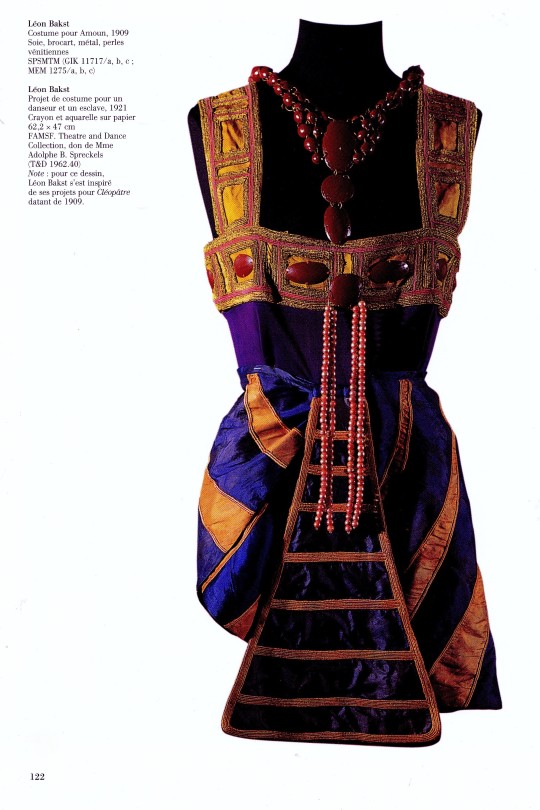







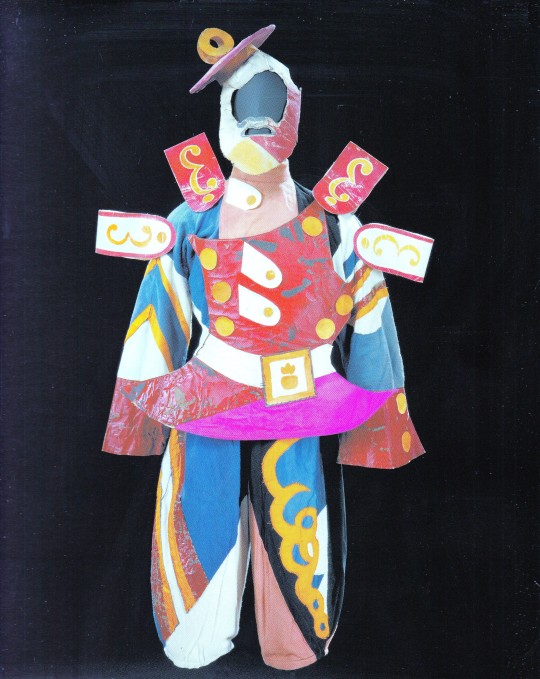
Étonne-moi! Serge Diaghilev et les Ballets Russes
sous la direction de John Bowlt, Zelfira Tregulova, Nathalie Rosticher Giordano,
Skira, Milano 2009, 339 pagine, 25 x 29 cm, 300 ill.colori, ISBN 9788857200910
euro 50,00
email if you want to buy [email protected]
Exposition Monaco, Moscou 2009
En mai 1909, Serge Diaghilev stupéfia le monde de la danse avec les premières représentations parisiennes de ses ballets, combinaison sans précédent de grâce et de vitalité, d’originalité et de raffinement technique. Monte-Carlo, qui fut pour Diaghilev un important centre d’activités pendant l’existence de la compagnie connue sous le nom de Ballets russes, célèbre ce centenaire par une grande exposition comptant plus de 300 oeuvres d’art ayant trait aux Saisons russes de 1909 à 1929.
L’exposition s’accompagne d’un catalogue entièrement illustré auquel ont contribué les plus grands spécialistes de l’histoire du ballet et des arts visuels russes.
Les productions légendaires du Pavillon d’Armide, de Cléopâtre, de Schéhérazade, du Sacre du printemps de Petrouchka, de Parade et de bien d’autres ballets revivent à travers des projets de décors, des costumes, des tableaux, des sculptures, des photographies, des éditions de luxe, des programmes et des objets de culture matérielle.
Les oeuvres d’art proviennent d’une grande variété de collections publiques et privées, nationales et internationales, telle la collection Fokine du Musée du théâtre de Saint-Pétersbourg. Les créations scéniques de Diaghilev s’accompagnent d’un nombre important de tableaux, de dessins et d’autres objets contextuels qui ont caractérisé la renaissance culturelle russe dans les premières décennies du XXe siècle.
L’exposition et son catalogue s’inscrivent dans une plus vaste série de manifestations ayant trait à l’activité de Diaghilev à Monte-Carlo et à Moscou, comprenant des spectacles de ballet, des films, des conférences et un colloque international.
30/05/23
orders to: [email protected]
twitter: fashionbooksmilano
instagram: fashionbooksmilano, designbooksmilano tumblr: fashionbooksmilano, designbooksmilano
#Serge Diaghilev#1909-1929#Ballets Russes#Monaco National Musée#art exhibition catalogue#Léon Bakst#Jean Cocteau#vaslav nijinsky#Nijinsky#fashion books#fashionbooksmilano
21 notes
·
View notes
Text
I believe the first ballet to A Midsummer Night’s Dream was Marius Petipa’s version for the Maryinsky Ballet in St. Petersburg in 1876. It was this that Michel Fokine in 1906 adapted and amended for students of the Imperial School. The cast included Vaslav Nijinsky, and it proved one of the very early works of Fokine to capture the attention of the impresario Serge Diaghilev. Fokine later reworked the score into Les Elfes for his own company at the Metropolitan Opera House in 1924. In 1933 Col. W. de Basil’s Ballets Russes de Monte Carlo staged David Lichine’s first ballet, Nocturne, using not Mendelssohn but Rameau music, with Alexandra Danilova as Titania, Léonide Massine as Oberon, and Lichine himself as Puck.
But the four most interesting versions for me are George Balanchine’s for New York City Ballet in 1962, Frederick Ashton’s for Britain’s Royal Ballet in 1964, John Neumeier’s for the Hamburg Ballet in 1977, and Christopher Wheeldon’s for the Colorado Ballet in 2000. All, except for the Ashton, are full-evening ballets. Wheeldon’s version not unexpectedly owes something to both Ashton and Balanchine. Neumeier’s version—which is by far the most adventurous and original and incorporates modern music by György Ligeti—has also been staged by the Paris Opera Ballet and the Royal Danish Ballet.
#shakespeare#william shakespeare#dance#ballet#shakespeare and dance#balanchine#midsummer#a midsummer night's dream
2 notes
·
View notes
Text
Maria Tallchief
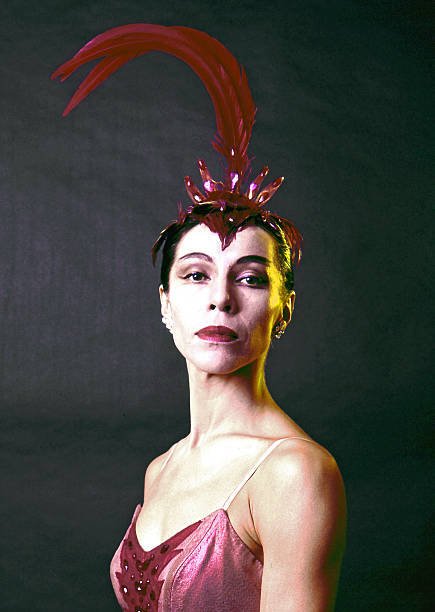
Maria Tallchief è stata una delle più importanti ballerine del ventesimo secolo e la prima danzatrice nativa americana della storia.
Osannata per la sua velocità, energia e passione unite a una grande abilità tecnica, è stata nominata donna dell’anno dal presidente degli Stati Uniti Eisenhower nel 1953, inserita nella National Women’s Hall of Fame, ha ricevuto la National Medal of Arts e il Kennedy Center Honor alla carriera.
È stata la prima ballerina americana a esibirsi all’Opéra di Parigi e al Bolshoi di Mosca.
Nacque il 24 gennaio 1925 a Fairfax, in Oklaoma. Il padre, Alexander Joseph Tall Chief era un ricco discendente della tribù Osage mentre sua madre, Ruth Porter, aveva origini scozzesi e irlandesi.
Trascorse i primi anni della sua vita in una casa in collina che affacciava sulla riserva indiana.
L’amore per la musica e la danza venne coltivato sin da quando era una bambina. Quando la famiglia si trasferì a Los Angeles, per consentire alle figlie di studiare, venne iscritta alla scuola di danza della coreografa russa Bronislava Nijinska. Era ancora un’adolescente quando si convinse che quella era la strada che voleva intraprendere, abbandonando gli studi di pianoforte, iniziati da piccola.
A 17 anni, con l’insegnante e amica di famiglia Tatiana Riabouchinska, si trasferì a New York, dove entrò nella compagnia Ballet Russe de Monte Carlo.
In un’epoca in cui danzatori e danzatrici statunitensi adottavano nomi di scena russi, lei portava avanti con orgoglio il suo patrimonio indiano. Ha sempre rivendicato il suo lignaggio opponendosi a stereotipi e discriminazioni nei riguardi delle persone native.
Lo stato dell’Oklaoma l’ha celebrata più volte e il 29 giugno 1953 le aveva dedicato una giornata, il Maria Tallchief Day.
Nel 1944 ha cominciato a danzare dal coreografo George Balanchine, suo futuro marito, con cui ebbe inizio una fortunata collaborazione artistica durata anche dopo la loro separazione.
Quando lui, nel 1947, distaccatosi dal Ballet Russe de Monte Carlo, aveva creato la sua compagnia, il New York City Ballet, Maria Tallchief ne divenne la star incontrastata.
L’unione tra le difficili coreografie del compagno e il suo appassionato modo di danzare rivoluzionarono il balletto. Era perfetta per i ruoli che richiedevano atletismo, velocità, aggressività. La sua elettrizzante interpretazione in L’uccello di fuoco nel 1949, la rese una vera star.
La sua Fata Confetto nello Schiaccianoci ha contribuito a trasformare il balletto in un classico annuale di Natale.
Ha collaborato con Balanchine fino al 1965 mentre faceva tour mondiali con altre compagnie come il Balletto dell’Opera di Chicago, il San Francisco Ballet, il Balletto Reale Danese, il Balletto di Amburgo e l’American Ballet Theatre. Ha rappresentato Anna Pavlova nel film Million Dollar Mermaid con Esther Williams.
Nel 1962, durante il suo debutto sulla televisione americana al Bell Telephone Hour, è nata la collaborazione con Rudolf Nureyev. Insieme hanno ballato il pas de deux da Infiorata a Genzano di August Bournonville.
Dopo il ritiro dalla danza, nel 1966, si era trasferita a Chicago dove ha diretto la Lyric Opera fino al 1979.
Nel 1981, ha fondato, con la sorella Marjorie, il Chicago Lyric Opera Ballet, di cui è stata direttrice artistica fino al 1987.
Dal 1990 è stata consulente artistica onoraria del Chicago Festival Ballet di Ken Von Heideke.
È morta a Chicago a causa delle complicanze di una rottura al bacino, l’11 aprile 2013, aveva 88 anni.
La sua vita ha ispirato diversi documentari e biografie.
2 notes
·
View notes
Text
In Rome as Role Model for young dancers during the Master Classes for the 2023 International Ballet Exams of the Méthode Russe de Monte-Carlo de Lorena Baricalla (the Montecarlo Russian Method by Lorena Baricalla) with the Affiliated School scuola di danza art'è directed by Paola Rizzica
My Method is based on the full development of the body-mind-soul of the artist/athlete
#lorenabaricalla #LB
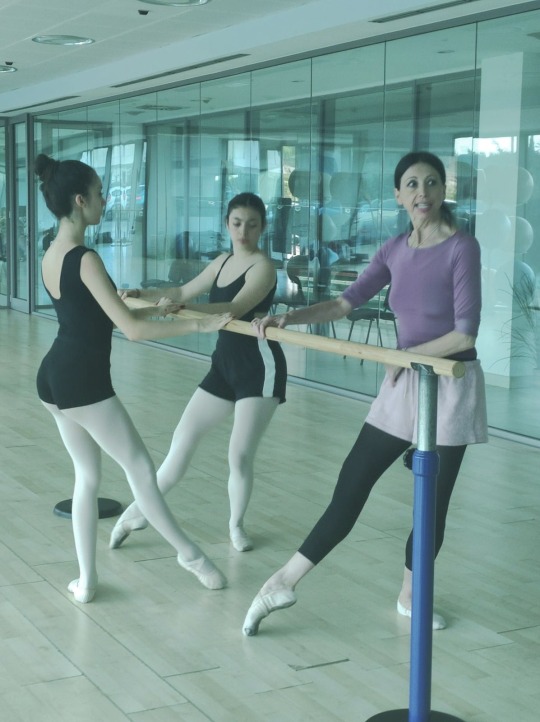
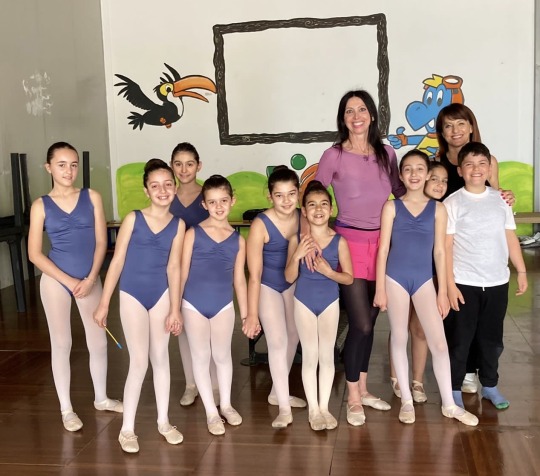
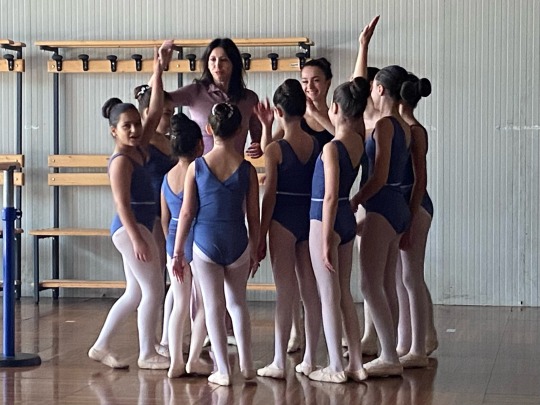


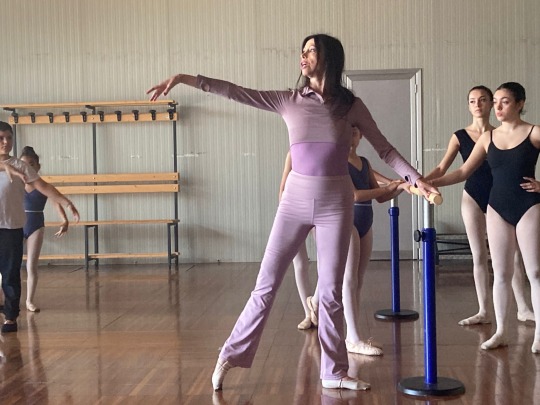




Lo
3 notes
·
View notes
Text

...January 24, 1925 ~
Remembering America’s first Prima Ballerina, MARIA TALLCHIEF, today on her birthday ❤️
Born on the Osage Reservation in Oklahoma, Tallchief began taking dance lessons at an early age. The family moved to Los Angeles, and at age 12 she began training with dancer/choreographer Bronislava Nijinska. Her dance career was beginning to accelerate, and at age 17, Tallchief found herself in New York City, as a member of the Ballet Russe de Monte Carlo. Then in 1944, she met with, and began working under, George Balanchine. In August of 1946, Tallchief and Balanchine married each another.
In 1947, Tallchief became the first American to perform with the Paris Opera Ballet. Back in the States, in October of 1947, she then became the first Prima Ballerina of the New York City Ballet. In 1949, Balanchine created the title role for Tallchief, in the electrifying “The Firebird” - with scenery and costumes by none other than Marc Chagall. This was the role that put her on top of the ballet world.
In 1952, she took some time off to go to Hollywood, appearing as the dancer Anna Pavlova in the Esther Williams movie “Million Dollar Mermaid”, a retelling of the life of Australian swimmer/actress Annette Kellermann. More demanding roles followed in the years to come.
In 1954, Balanchine took an obscure ballet titled “The Nutcracker”, completely restaged it, and put Tallchief into the role of the Sugar Plum Fairy, transforming it into the classic it is today. More roles followed: the Swan Queen in “Swan Lake”; Eurydice in “Orpheus”; and principal roles in numerous plotless vehicles. She was Rudolf Nureyev’s partner for his 1962 American debut, which was broadcast on national tv.
Tallchief retired from dancing in 1966, moving to Chicago and founding the ballet school in that city’s Lyric Opera. She also became the artistic director of the Chicago City Ballet. She received the Kennedy Center Honor in 1996. Maria Tallchief passed away in 2013 at age 88.
Her legacy as a dancer is one who was electrifying, passionate and fiery, but also one of unsurpassed strength and technical brilliance.
Tallchief is honored as one of the “Five Moons”, i,e, the five Oklahoma-born Native American ballerinas, which include Maria Tallchief (Osage); sister Marjorie Tallchief (Osage) - and who sadly just passed away in 2021 at age 95; Yvonne Chouteau (Shawnee); Moscelyne Larkin (Eastern Shawnee/Peoria); and, Rosella Hightower (Choctaw).
PHOTOS -
L: Photo still of Miss Tallchief from the 1952 movie "Million Dollar Mermaid", where she portrays Anna Pavlova.
R: Miss Tallchief in her role of "Eurydice" in George Balanchine's production of "Orpheus"; photo by George Platt Lynes, 1948.
3 notes
·
View notes
Photo

Today In History Alvin Ailey was born on January 5, 1931, in Rogers, Texas. His experiences of life in the rural South would later inspire some of his most memorable works. Ailey was introduced to dance in Los Angeles by performances of the Ballet Russe de Monte Carlo and the Katherine Dunham Dance Company, and his formal dance training began with an introduction to Lester Horton’s classes by his friend Carmen de Lavallade. In 1958, he founded Alvin Ailey American Dance Theater to carry out his vision of a company dedicated to enriching the American modern dance heritage and preserving the uniqueness of the African-American cultural experience. He established the Alvin Ailey American Dance Center (now The Ailey School) in 1969 and formed the Alvin Ailey Repertory Ensemble (now Ailey II) in 1974. Mr. Ailey was a pioneer of programs promoting arts in education, particularly those benefiting underserved African American communities. CARTER™ Magazine carter-mag.com #wherehistoryandhiphopmeet #historyandhiphop365 #cartermagazine #carter #alvinailey #blackhistory #staywoke #blackhistorymonth #history #ballet #blacktwitter https://www.instagram.com/p/CnB6ddMummT/?igshid=NGJjMDIxMWI=
#wherehistoryandhiphopmeet#historyandhiphop365#cartermagazine#carter#alvinailey#blackhistory#staywoke#blackhistorymonth#history#ballet#blacktwitter
31 notes
·
View notes
Text

The British-American dancer Frederic Franklin in “Le Corsaire” (Ballet Russe de Monte Carlo?)
3 notes
·
View notes
Photo

Anne Raven Wilkinson (February 2, 1935 – December 17, 2018) In August 1955 she became the first African American woman to receive a contract to dance full-time with a major ballet company, the Ballet Russe de Monte Carlo of New York City. She was promoted to soloist during her second season with the troupe and remained with the company for six years. She was born in New York City to Anne James Wilkinson and Dr. Frost Bernie Wilkinson, a dentist. She had been a fan of ballet since the age of five. On her ninth birthday, an uncle gave her the gift of ballet lessons at the Swoboda School where she studied under the direction of well-known dancers from Russia’s Bolshoi Theatre. She later transferred to the Professional Children’s School in the Bronx where she continued her training, remaining there through her last two years of high school. She first auditioned for a position with the Ballet Russe de Monte Carlo in 1954. Twice she was rejected but she persevered. On her third try, Sergei Denham, the company’s director, informed her that she would be accepted into the Company. She was asked not to publicize her race, she often had to wear white makeup onstage to conceal her racial identity. In 1957, the owner of a hotel in Atlanta asked if she was black, she refused to lie, and she was barred from staying at the hotel with the rest of the company. Two members of the Ku Klux Klan bolted on stage, interrupting a performance in Montgomery, asking “Where’s the nigra?” When none of the Company members responded to them, the men left. As word of her racial identity became known, she was not allowed to participate in performances in southern cities partly to ensure her safety. In 1961, she left the Ballet Russe Company and was never hired by another American ballet company again. She joined a convent in Font de Lac, Wisconsin. She got a soloist contract with the Dutch National Ballet, where she stayed for seven years. In 1973, she returned to the US where, between 1974 and 1985, she performed with the New York City Opera as an extra dancer. #africanhistory365 #africanexcellence https://www.instagram.com/p/CoKVPgJrshO/?igshid=NGJjMDIxMWI=
2 notes
·
View notes
Text
Su temi di Offenbach
Manuel Rosenthal (1904 - 2003) Gaîté parisienne, balletto su musiche di Jacques Offenbach. Orchestre Philharmonique de Monte-Carlo diretto dall’autore.
Il balletto, sceneggiato da Étienne de Beaumont e coreografato da Léonide Massine, fu presentato dalla compagnia del Ballet Russe de Monte-Carlo al Théâtre de Monte-Carlo il 5 aprile 1938. Per l’orchestrazione (per me insoddisfacente), Rosenthal…

View On WordPress
#Étienne de Beaumont#Jacques Brindejont-Offenbach#Jacques Offenbach#Léonide Massine#Manuel Rosenthal#Orchestre Philharmonique de Monte-Carlo#Pépita Offenbach#Prosper Brindejont#trascrizioni
0 notes
Text
Allegra Kent Rehearsing La Sonnambula
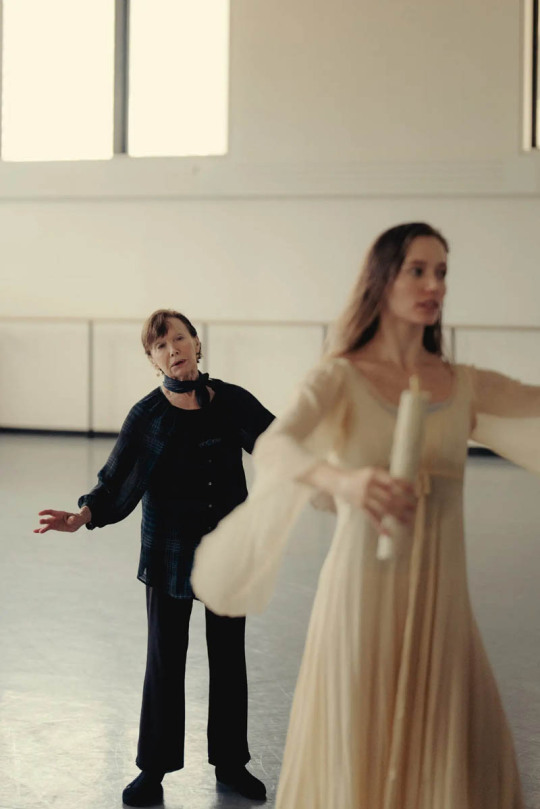
Allegra Kent rehearsing Unity Phelan in La Sonnambula. Photo: Amir Hamja for The New York Times
Happily for all of us, Jonathan Stafford and Wendy Whelan are bringing back dancers who worked with Balanchine to coach today's company members. This article about Allegra Kent, the original NYCB Sleepwalker in La Sonnambula, coaching Unity Phelan in the role, is from today's New York Times.
Allegra Kent Conjures ‘Messages From the Air, the Atmosphere’
The iridescent Balanchine ballerina returns to New York City Ballet this season to coach for “La Sonnambula.” What does she want? Mystery.
By Gia Kourlas
Oct. 3, 2023
It was the first ballet that made sense to her. There was mystery, passion, pain. The music, by Vittorio Rieti, after themes from Bellini operas, swept her into another world.
“I was 11,” said Allegra Kent. “My heart was broken.”
Kent, the former New York City Ballet principal, was just a child when she attended a performance by Ballet Russe de Monte Carlo in Los Angeles. The final work on the program was “Night Shadow,” George Balanchine’s 1946 ballet, later called “La Sonnambula.”
Kent had no idea who Balanchine was. But just four years later, she would join New York City Ballet, the company he had formed with Lincoln Kirstein. And not long after that, in 1960, Balanchine revived the ballet, casting Kent as its mysterious Sleepwalker.

Allegra Kent working with Phelan as the Sleepwalker and Taylor Stanley as the Poet. Photo: Amir Hamja for The New York Times
This season, as part of the company’s 75th anniversary, Kent, 86, was brought in as a guest coach for “La Sonnambula,” which returns Wednesday for four performances, and for “The Unanswered Question,” the gripping second movement of “Ivesiana.”
Kent wasn’t with the company from its 1948 start, but she was still a part of its early days and one of Balanchine’s most important muses.
She joined City Ballet at 15, just a year after she arrived in New York from California to study at the company-affiliated School of American Ballet. Balanchine gave her a scholarship, and soon after, she began attending performances.
“The first ballet I saw on the first program was 'Serenade,'” she said, referring to the Balanchine masterpiece in an interview at her Manhattan apartment. “I can’t remember the other ballets because it was like, 'Serenade'—the whole world is open.”
Eventually La Sonnambula, with its magic and tragedy, came her way. In this haunting ballet, the Poet hero romances a woman, the Coquette, before discovering a Sleepwalker at a masked ball. Holding a candle, the Sleepwalker skims across the stage in close-knit bourrée steps on pointe wearing a flowing dress. Its diaphanous sleeves, like wings, catch the air as they stream behind her.
The Coquette’s jealousy leads the Baron, the host of the ball, to stab the Poet; the Sleepwalker, devastated, carries him away. With the right dancers, the ballet is gut-wrenching, but it takes imagination born from almost psychic sensations. The heroine may be walking in her sleep, but “she’s not expressionless,” Kent said. “You can’t come in like a zombie.”
In the pas de deux, the Sleepwalker glides past the Poet, who ducks underneath her candle; he waves his hand in front of her face to see if she is awake; he falls to the floor in her path, but she steps over his outstretched body, unruffled, and continues on her way. There should be daring, too: on tour in Moscow, Balanchine demonstrated one of the Sleepwalker’s crossings on a stage that Kent said was like a football field.

“She’s not expressionless,” Kent said of the Sleepwalker. “You can’t come in like a zombie.” Photo: Amir Hamja for The New York Times
“He took the candle and ran on the diagonal,” she said. “In those days, they had footlights. He stepped over the footlight and stopped. I thought, Oh, my God, he’s going to die” — plunging off the stage. “But he didn’t die. He stepped back and gave the candle to me.”
He was showing her, in essence, how the Sleepwalker possesses a layer of extrasensory perception; that what can’t be seen can be felt, and that even in a sudden stop — as he did himself on that stage — there should be no physical reverberation.
“Balanchine loved danger,” Kent said. “In the step in ‘The Unanswered Question’ when she slowly goes back” — the ballerina, again in white and held aloft, falls into the arms of four men obscured by darkness — “the audience is terrified for a moment. So this is the genius of Balanchine. Ah! She’s going to run off the stage! She’s going to fall over backward! Is anyone going to catch her?”
The original Sleepwalker — and the one Kent first saw all those many years ago — was the great ballerina Alexandra Danilova. Kent herself was briefly coached by Danilova not in the studio, but in a chance meeting, waiting for the 104 bus on Broadway. “She stood up and started demonstrating at the bus stop,” Kent said. “Gosh, what a moment.”

This is a ‘Sleeping Beauty’ in the Balanchine style,” Kent said. “The kiss does not wake her up.” Photo: Amir Hamja for The New York Times
Rehearsing at City Ballet’s studios with Unity Phelan and Taylor Stanley, who will perform the Sleepwalker and the Poet in one cast, Kent was intensely ethereal, acutely focused, with fingers full of life. She said, “You’re getting messages from the air, the atmosphere.”
Kent turned to the mirror to study their reflection as if it were a painting. With her elbows raised, her fingertips curving toward her chest, she worked on details — as many as she could. She was trying, it seemed, to penetrate below the surface of the skin, to draw raw emotion into the movement. Details are important to Kent, as they were to Balanchine. He would come backstage and say, “‘Oh, your crown is half an inch too far back,’” she said. “‘Bring it forward.’ I mean, it’s not even the hair, it’s just the crown. Details.”
Kent stood in front of Phelan, who held the candle with a curved arm as the other extended to the side. Kent rested her elegant fingers on Phelan’s shoulders — just a whisper of pressure — and stared at their reflection in the mirror. “Don’t look up,” she said, releasing her hands.
“You are sleepwalking, but you’re aware,” Kent said. “You’re in another realm but there’s something going on within you. A great tragedy that is not explained.”
Phelan, who danced the Sleepwalker in a previous season, is approaching the role differently now. Her Sleepwalker moved too forward from the chest, but with Kent’s help, she is working on relaxing, softening. “You can still be active, but if it gets all tense then it looks like you’re putting on a show instead of it coming from a genuine place,” Phelan said later. “If I’m just being myself and actively doing something, I’m not sensing everything in my body. So that’s what I’m trying to bring it back to.”
When she first danced the Sleepwalker, Phelan wanted to prove that she could be ghostly, waiflike, light. “What I’ve discovered from Allegra is that I may have been going too far with that,” she said. “You let yourself be involved emotionally. I think I was trying to stay so disassociated.”

“You are sleepwalking, but you’re aware,” Kent said. “You’re in another realm but there’s something going on within you. A great tragedy that is not explained.” Photo: Amir Hamja for The New York Times
When the Sleepwalker comes onstage, she’s not just taking brisk walks on pointe. She’s searching. “We don’t know what it is — if it’s a child, if it’s a love,” Kent said. “But it’s a huge thing missing. It’s a huge urgency. But beyond that, there’s so much mystery. There is a huge lack in her life.”
Stanley, rehearsing the moment when the Poet waves his hand in front of the Sleepwalker’s face to see if she is awake, was too dynamic. Kent stepped in to demonstrate.“ Just the tiny back and forth over my eyes,” Phelan said, “with her hand being that close to my face, I saw all the energy. She wasn’t shaking. Nothing was happening. But everything was alive in her hand. I was like, that’s what she means.”
There’s nothing casual about “La Sonnambula,” which Kent says is like no other Balanchine ballet. “I used to do this night after night in my living room just to get that despair and the subtleties,” Kent said. “That search. This is a ‘Sleeping Beauty’ in the Balanchine style. The kiss does not wake her up.”
Kent, with her cheerful wit, summed up her own “Sonnambula” experience: “This is what I’d say: Thank you, Balanchine,” she said. “Thank you, Madame Danilova. And I thank the M.T.A., the metropolitan transit authority. The generosity of her and the generosity of the bus being late.”
#Balanchine#La Sonnambula#Allegra Kent#Night Shadow#Unity Phelan#Taylor Stanley#rehearsing#rehearsal#ballet#NYCB#New York City Ballet#NYC Ballet#NYCB@75
1 note
·
View note
Text
ALMANACCO DEL 43° FESTIVAL DI MONTE-CARLO - EDIZIONE 2019

ALMANACCO DEL 43° FESTIVAL DI MONTE-CARLO – EDIZIONE 2019
PALMARES DEL 43° FESTIVAL DI MONTE-CARLO
CLOWN D’ORO
Martin Lacey Jr. – Numero misto di grandi felini
Royal Circus di Gia Eradze - Presentazione di quadri di insieme
CLOWNS D’ARGENTO
Duo Just 2 man - Cinghie aeree
Troupe Aliev – Trapezio volante
Troupe Filinov - Altalena russa
Troupe acrobatica nazionale della Cina - Insieme di numeri presentati
CLOWN DI BRONZO
Famiglia Joy Gartner – Elefanti
Without Socks - Clown
Cesar Dias – Comicità
Quatuor Prilepin - Acrobatica in banchina
The Owl and Pussy cat - Sostenuto al trapezio
Charlotte & Nicolas - Adagio acrobatico
PREMI SPECIALI (CLICCA QUI)
Un Festival indimenticabile, memorabile, sontuoso. Praticamente pazzesco. I favolosi quadri di Gia Eradze, i due straordinari numeri di Martin Lacey e una serie di troupe eccellenti renderanno questa edizione della kermesse monegasca come una delle più belle che ricordiamo. Cose che oggi ci sembrano lontanissime e che temiamo che per un po' non torneranno. Ma che hanno lasciato un ricordo indelebile...
ELENCO PARTECIPANTI
2019
A FABERGÉ TRIBUTE
QUICK CHANGE
FANTASIES IN WHITE
EQUILIBRISTA, FANTASIA AEREA E BALLETTO
YURI VOLODCHENKOV
CAVALLERIZZO GITANO
THE WOMEN COSSACKS
CAVALLERIZZE COSACCHE
THE FILINOV TROUPE
DOPPIA ALTALENA RUSSA
ACROBATIC DUO SEGWAY
HOVERBOARD
PRILEPIN QUARTET
ACROBATICA IN BANCHINA
JUST TWO MEN
SOSTENUTO ALLE CINGHIE AEREE
JOY GÄRTNER’S FAMILY
ELEFANTI
CESAR DIAS
COMICITA'
FIPS & BEAU
CLOWN
MARCEL KRÄMER
BISONTI E ASINELLI
3J
GIOCOLIERIA
WITHOUT SOCKS
CLOWN
CHARLOTTE AND NICOLAS
ADAGIO ACROBATICO
ARTEM LYUBANEVYCH
PALO AEREO
THE OWL AND THE PUSSYCAT
SOSTENUTO AL TRAPEZIO
DIAS BROTHERS
ICARIANI
XING YUNWEI
EQUILIBRISTA SU CANNE
NATIONAL ACROBATIC TROUP OF CHINA
ACROBATICA AI PALI
ALIEV
TRAPEZIO CON BARRE RUSSE
MARTIN LACEY JUNIOR
GRANDE GABBIA MISTA
ALAN SULC
GIOCOLIERE
THE ROYAL CIRCUS BALLET
DANCER
RETO PAROLARI
ORCHESTRA
PETIT GOUGOU
M. LOYAL

MARTIN LACEY JR.
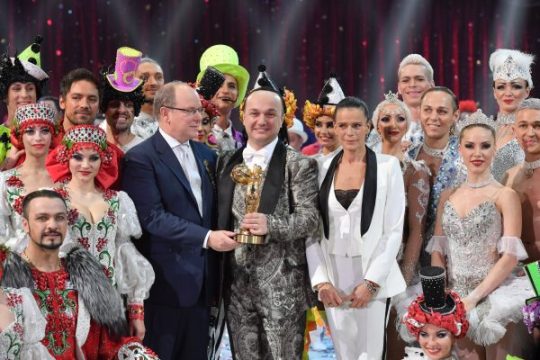
ROYAL CIRCUS DI GIA ERADZE

DUO JUST 2 MAN

TROUPE ALIEV
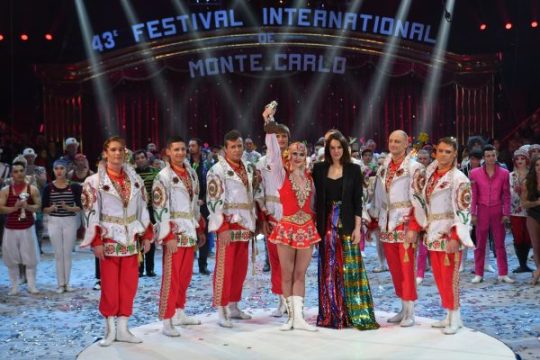
TROUPE FILINOV
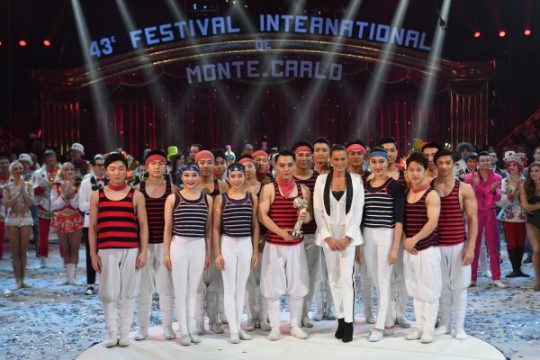
TROUPE ACROBATICA NAZIONALE DELLA CINA

FAMIGLIA DI JOY GARTNER
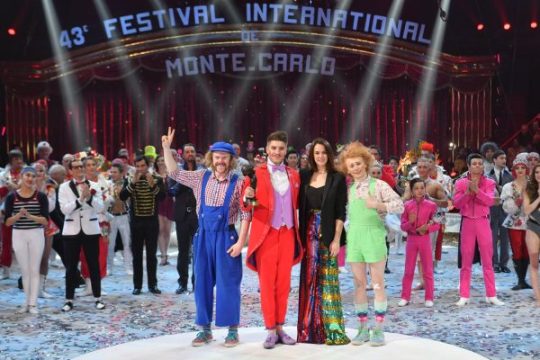
WITHOUT SOKS
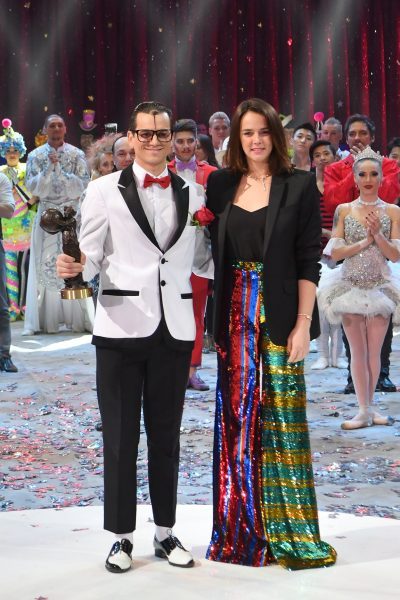
CESAR DIAS
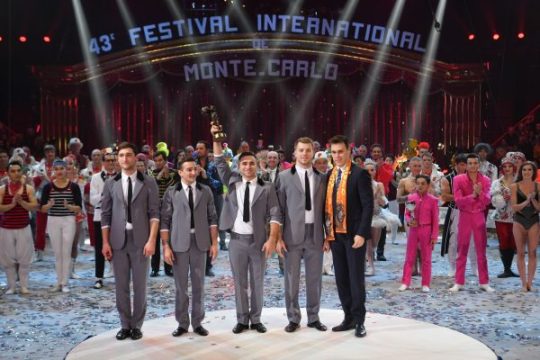
QUATUOR PRILEPIN

THE OWL AND THE PUSSYCAT

CHARLOTTE & NICOLAS


LE DIGITTE DEL ROYAL CIRCUS
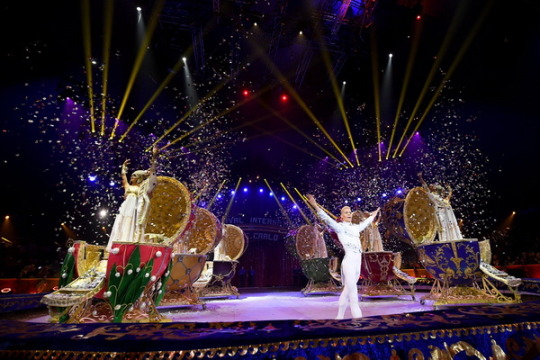
OMAGGIO A FABERGE' - ROYAL CIRCUS


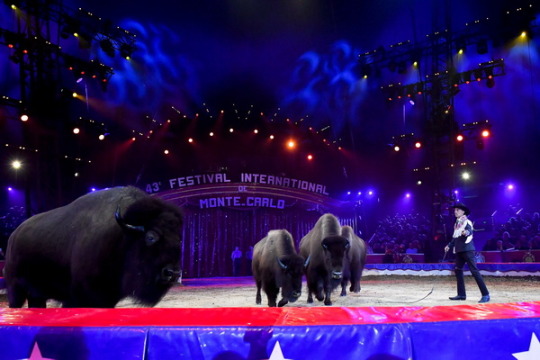


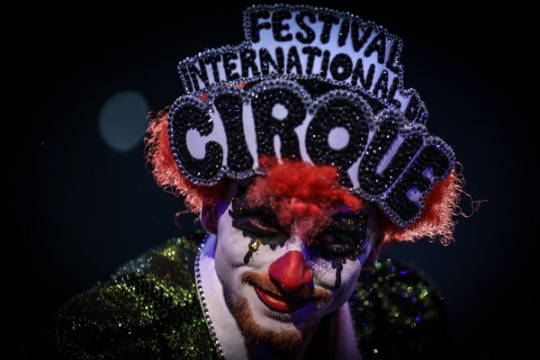
GUARDA LA PHOTOGALLERY DELLO SPETTACOLO
Foto Dario Duranti, Maurizio Colombo, Charly Gallo, Manu Vitali, Michael Alesi e archivi Circusfans
Video Archivio Maurizio Colombo, si ringrazia Circus Media per il video della Famiglia Gartner
Visitate la nostra sezione
ALMANACCO DEL FESTIVAL INTERNATIONAL DU CIRQUE DE MONTE-CARLO
ALMANACCO DEL 43° FESTIVAL DI MONTE-CARLO – EDIZIONE 2019
Info Festival Cirque de Monte Carlo
Se questo articolo ti è piaciuto condividilo sui tuoi social utilizzando i bottoni che trovi qui sotto
Read the full article
#alansulc#artemlyubanevych#cesardias#charlotte&nicolas#circo#circus#cirkusz#cirque#cyrk#DiasBrothers#duojust2men#giaeradze#joygartner#marcelkramer#martinlacey#petitgougou#retoparolari#RoyalCircusofGiaEradze#sirkus#theowlandthepussycat#TrioWithoutSocks#troupealiev#troupefilinov#tsirk#zirkus
0 notes